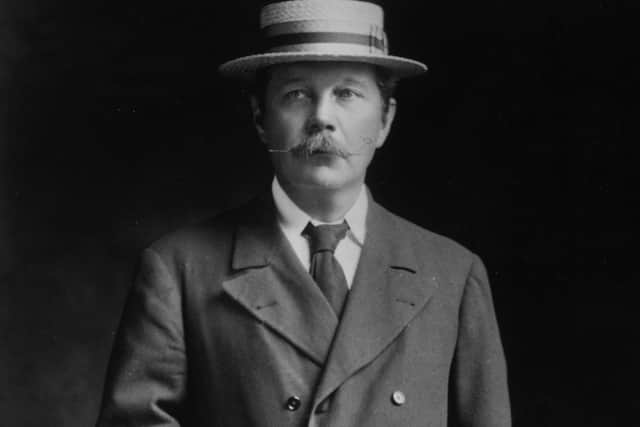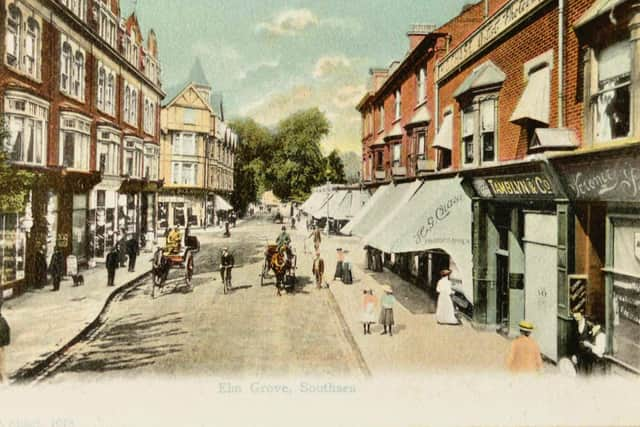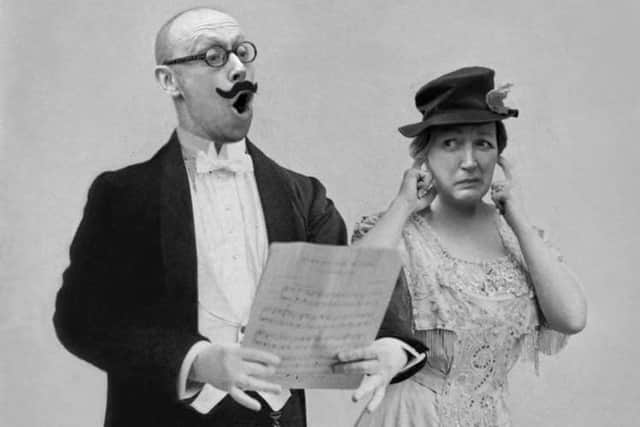New book collecting Sir Arthur Conan Doyle's early works shows 'there's no doubt' Southsea is Sherlock Holmes' home
and live on Freeview channel 276
He was the oldest son in the family and with his father hospitalised with alcoholism, it was up to him to provide for his six siblings and their mother. He was determined to make a success of his stay in Southsea. Setting up as a GP at Number One Bush Villas, Elm Grove, Southsea, Conan Doyle found life hard at first.
To supplement his income, he wrote short stories and submitted them to magazines that brought in a few extra pounds. But that wasn’t all he wrote. He went on to write two Sherlock Holmes novels, 1887’s A Study In Scarlet, and The Sign of Four, published in 1890, the year he left Portsmouth. Meanwhile, some of his earlier stories went forgotten and never appeared in collections.
Advertisement
Hide AdAdvertisement
Hide AdSouthsea Stories and Beyond, The Complete Uncollected Stories gathers them together, along with a few uncollected stories he wrote beforehand and 10 he wrote afterwards. Together they show him inching towards creating Sherlock Holmes – and reveal the lasting influence Portsmouth had on his writing long after he left.


Southsea and Portsmouth often feature in these stories. Some were set in ‘Birchespool’, his fictitious name for Southsea – he even went on to write a novel set there. The Stark Munro Letters (1895), tells the story of a young GP who arrives in a seaside town hoping to make his way as a writer, and details his trials and tribulations along the way.
The influence of Portsmouth and Southsea
Local author Matt Wingett adds short notes at the end of each story, adding tidbits about Conan Doyle’s life in the town, and how his experiences up to then influenced the stories, too. In this book you will discover:
• How Arthur Conan Doyle used the names of places in Portsmouth in his stories, and transplanted them to other locations. In his story Touch and Go, A Midshipman’s Story (1886), the tale begins in a fictional Scottish village with a surprisingly familiar name – none other than ‘Rudmore’.


• In another yarn, Our Midnight Visitor, he includes mention of the Winner Sands off of the Isle of Arran – though really they are to be found near Hayling Island.
Advertisement
Hide AdAdvertisement
Hide Ad• How his love affair with an Irish heiress called Miss Elmore Weldon led him to briefly rename Bush Villas as Bellevue after her home in Ireland. ‘Elmo’ stayed in Ventnor on the Isle of Wight while Conan Doyle tried to make enough to support her, but when the affair ended he wrote a comical story laughing at himself called The Heiress of Glenmahowley.
• How Conan Doyle used his experiences speaking at lectures at the Philosophical and Literary Society in Southsea to write a comic tale.
• What inspiration he received the soldiers he socialised with and sometimes from worked alongside in Portsmouth.


• The many different genres he Conan Doyle mastered. He wrote far more than the detective stories he is famous for, and with his wide-ranging imagination he wrote comedies, adventures, romances, horror, ghost stories, revenge tales and much more besides.
Advertisement
Hide AdAdvertisement
Hide Ad• Portsmouth staying with him all his life, and how reminiscences of his time in the town turn up again and again in his writings.
• That it’s possible the true story of the last duel between two Englishmen in Britain, a historical event that happened in Southsea and Browndown, Alverstoke, inspired his story of a love triangle in the fictional town of Birchespool.
• How he met his second wife, Jean Leckie, at a ball in Southsea, while still married to his first wife – and how all three moved in together at Undershaw, Hindhead, where for 10 years Leckie was his ‘Platonic mistress’.


• How a story set on the road between Southampton and Portsmouth harks back to his younger days working on a whaling ship.
Advertisement
Hide AdAdvertisement
Hide Ad‘There’s no getting round the reality that Southsea and Portsmouth had a massive influence on Arthur Conan Doyle,’ says author and publisher Matt Wingett. ‘In Southsea he had the time to gather his thoughts. Here, he processed life experiences he’d had up to this point, like working as a ship’s surgeon down the west coast of Africa, and then on a whaler in the Arctic. In Southsea he uses these themes as well as new ones that he then uses in his first Sherlock Holmes novel, A Study In Scarlet.’
Matt adds how striking it is that, very early on, Conan Doyle writes about houses set in great empty moorlands accompanied by strange goings-on. One early story, The Winning Shot from 1883 features a country house in Dartmoor with a very big dog... All these ingredients come together later to create the world of Sherlock Holmes. He adds: ‘The Winning Shot also features a Victorian villain who is a genius – in him you can’t help seeing a precursor of Professor Moriarty in Octavius Gaster!’
Southsea Stories And Beyond also features a handful of Conan Doyle’s stories from before his time in Portsmouth, and for the first time in a collection includes The Haunted Grange of Goresthorpe – his oldest known story that was submitted to Blackwood’s magazine in the late 1870s when he was around 20.
‘It was never published in his lifetime,’ says Matt. ‘They held it on file and there it sat in the archives until the Arthur Conan Doyle Society first published it in 2000. That means it’s still in copyright and I had to get the permission of the Conan Doyle Estate to publish it. It was very kind of them, and I’m so glad, because it really completes the collection.’
Advertisement
Hide AdAdvertisement
Hide AdIn fact, that very first pre-Southsea story has elements that Conan Doyle developed further in Southsea. The story-teller is a doctor, who relates the tale of a mystery, while his friend is an abstract thinker who sits in a cloud of smoke from his pipe as he thinks things through. So, the seeds of Holmes and Watson’s characters were in his imagination from early on, and it’s their investigation of a haunting that lies at the heart of the story.


Conan Doyle also wasn’t one to waste a good line. In his story The Fate of the Evangeline from 1885, he first uses the line ‘Exclude the impossible, and what is left, however improbable, must be the truth,’ which is almost word-for-word Sherlock Holmes’ statement of how he approaches tough cases, first uttered by Holmes in the 1890 Southsea novel, The Sign of Four.
‘It’s absolutely clear that Southsea provided Conan Doyle with a secure environment in which to explore his imagination and develop his ideas,’ says Matt. ‘I think when most people think of his famous detective, they think of London, of 221b Baker Street, of Mrs Hudson and Watson. But actually, Conan Doyle had a friendly rival who lived on Grove Road called Dr James Watson... and in the Holmes adventure The Man With The Twisted Lip, the fictional Dr Watson is misnamed James by his wife, Mary. There are so many connections in the Holmes stories with the tales he wrote here that it’s beyond coincidence. There’s no doubt that Southsea is Sherlock’s Home.’
The launch event and how to get the book
The book is being launched on Thursday, December 8, 5.30–7.30pm at Portsmouth Museum with a talk by Matt and performance from music hall act Hudson & Lestrade. Tickets are free but must be booked, go to: eventbrite.co.uk.
Advertisement
Hide AdAdvertisement
Hide AdAfter that it will be available on the weekend of 9th-10th December at Portsmouth Museum Christmas market.
The book costs £30 in hardback and £18 in paperback, but will be available at the launch and from selected retailers for a short period at £25 per copy for the hardback and £15 for the paperback.
You can order the book post-free in the UK from the publisher, at lifeisamazing.co.uk, and it will so be available at the following selected outlets across the city: Portsmouth Museum, Southsea Rock, Marmion Road, New To You, Cosham, and Pigeon Books, Southsea. Matt will also be selling the book on Love Southsea market and Port Solent Christmas Fair, weather permitting.